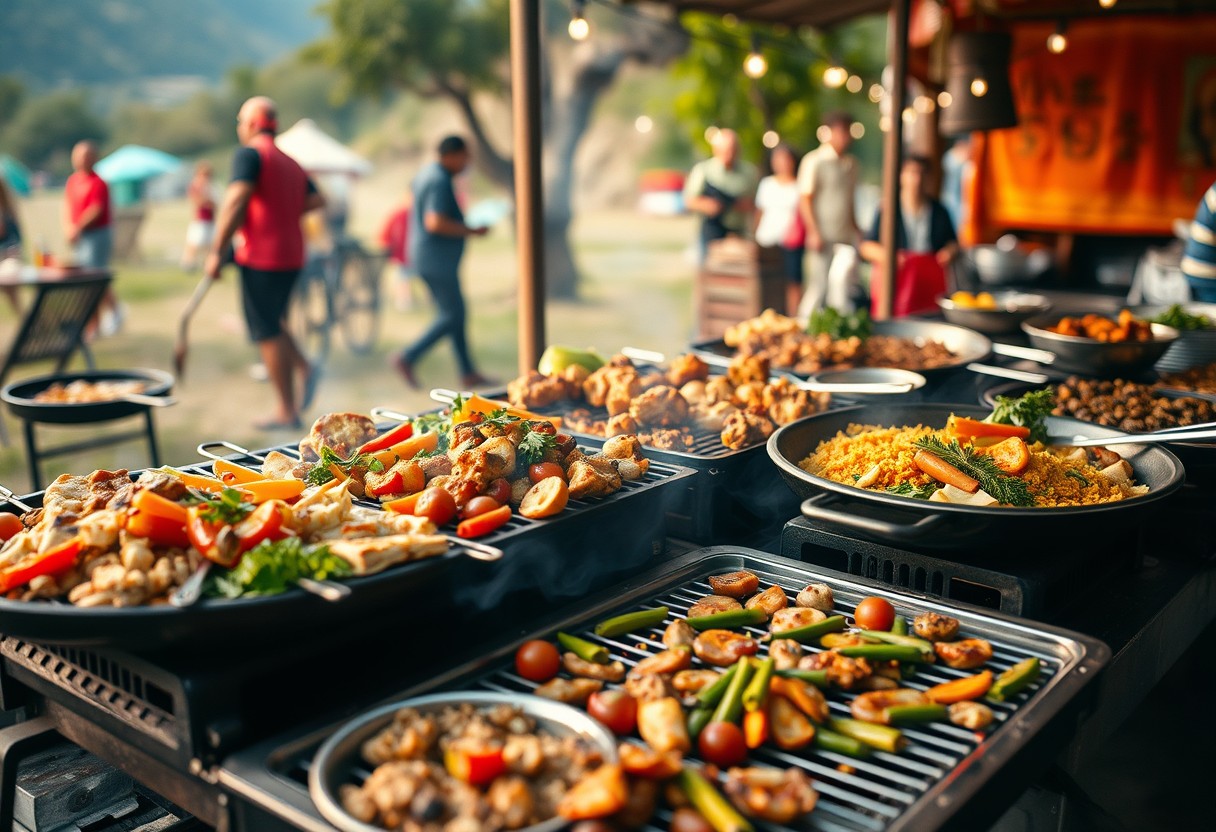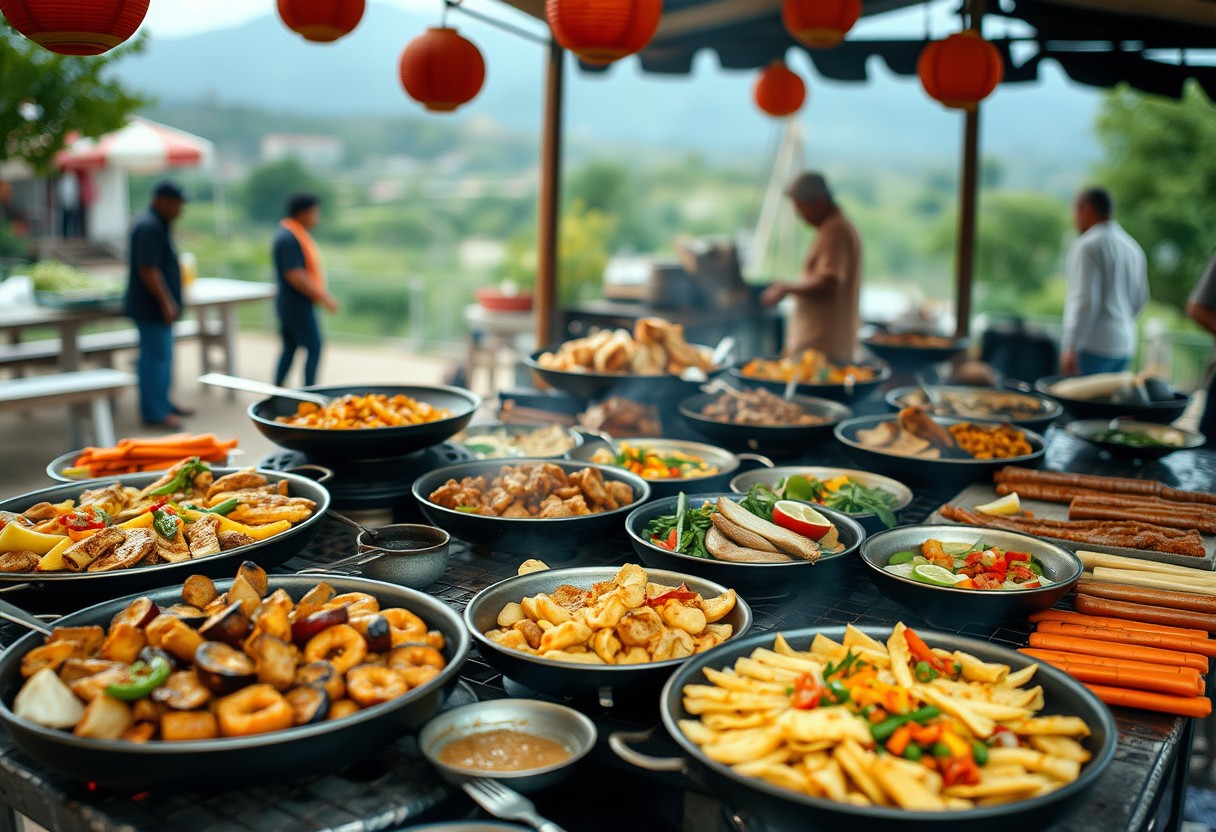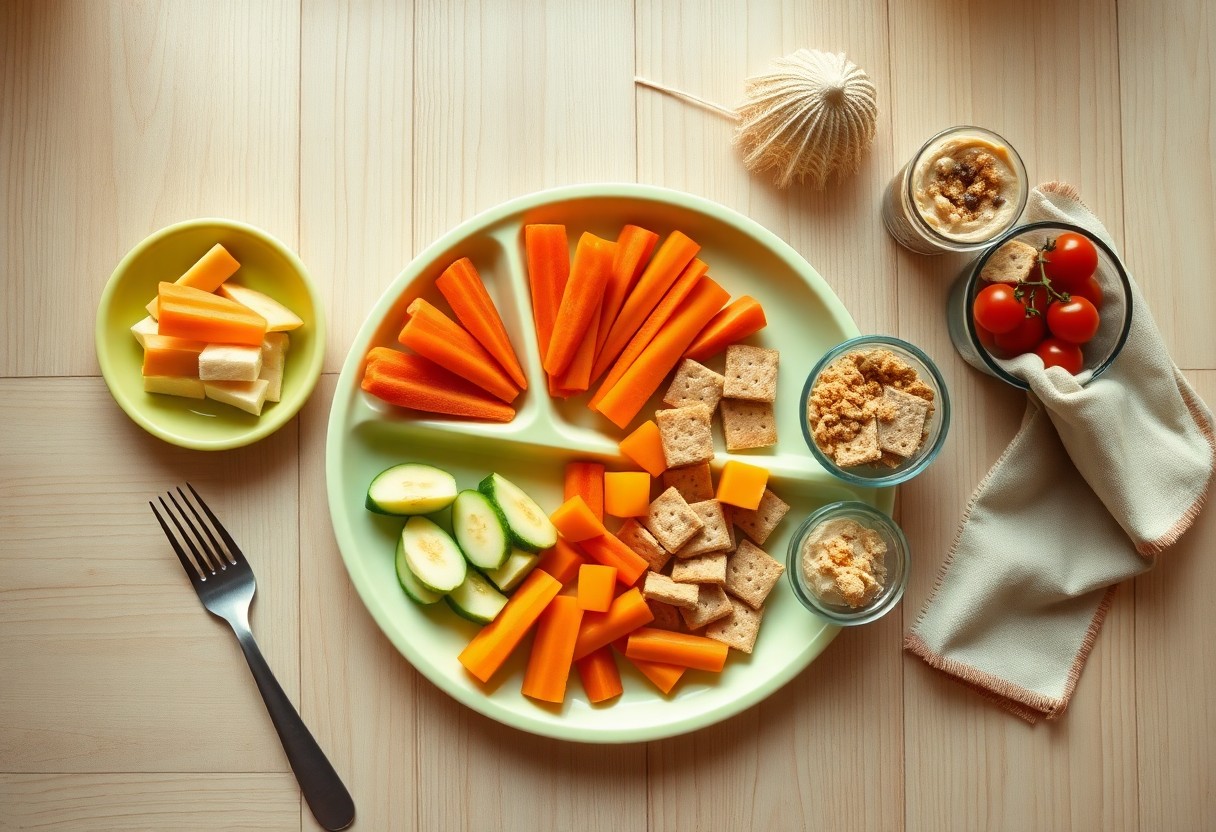There’s a world of culinary delight waiting for you as you investigate the rich tapestry of regional flavors through diverse grilling techniques and recipes. Grilling isn’t just about searing meat; it’s a gateway to explore local traditions and ingredients that define each culture. In this post, you’ll discover how to enhance your grilling repertoire by embracing unique spices, marinades, and cooking methods from around the globe. Get ready to elevate your next barbecue with delicious dishes that pay homage to various culinary backgrounds while igniting your passion for cooking outdoors.
Key Takeaways:
- Regional Flavors: Discover how different regions influence grilling techniques and flavors, showcasing local ingredients and traditional cooking methods.
- Diverse Techniques: Experiment with a variety of grilling methods such as smoking, direct heat, and indirect heat, each offering unique textures and tastes to recipes.
- Creative Recipes: Learn to combine regional ingredients with innovative grilling recipes to elevate any outdoor cooking experience and cater to diverse palates.
Understanding Regional Flavors
A deep look into the world of grilling reveals that regional flavors are not just mere preferences; they are a reflection of cultural identities, histories, and local ingredients. These unique flavors shape the way dishes are prepared and enjoyed, creating a rich tapestry of culinary traditions across different regions. By exploring the regional differences in grilling techniques and recipes, you can appreciate the stories and heritage behind the food you savor, making your grilling experiences more meaningful and satisfying.
The Importance of Regional Identity
To truly embrace the diversity of grilling, it’s vital to recognize the importance of regional identity in shaping culinary practices. Each area boasts its own customs, seasonal produce, and age-old recipes, often passed down through generations. These elements combine to create a distinct character in not only the flavors but also in the very act of grilling itself. Understanding this concept allows you to appreciate the nuances that make each dish special, providing a deeper connection to the food you eat.
To honor this identity, you should explore the various techniques and recipes that originate from different regions. Whether it’s the robust, smoky flavors of Southern barbecue, the light and herbaceous dishes found along the Mediterranean coast, or the bold, spicy flavors of Southeast Asian grilling, each one tells a story and invites you to partake in a world of gastronomic adventure. By engaging with these traditions, you will enhance your overall grilling repertoire while also promoting an appreciation for the cultural significance embedded within each dish.
Key Ingredients by Region
On your journey through grilling, one of the most significant aspects to consider is the variety of key ingredients that define each region. Ingredients such as spices, herbs, marinades, and cooking techniques vary widely depending on locale. For instance, in Texan barbecue, you’ll find oak wood and spices like cumin and chili powder, which create that signature smoky, spicy flavor. In contrast, Mediterranean grilling often showcases olive oil, fresh herbs like oregano and rosemary, and citrus, all of which impart a lighter, brighter quality to the dishes.
Regional ingredients significantly affect both the cooking method and the flavor profiles of the dishes. Fresh, locally sourced produce, proteins, and marinades not only enhance the taste but also contribute to the pride of local culinary traditions. Understanding this aspect will allow you to make informed choices when selecting ingredients for your grilling, ensuring that you capture the essence of each region’s flavor in your dishes.
Flavor Profiles: Sweet, Sour, Spicy, and More
With every region celebrated for its unique flavor profiles, you can elevate your grilling experience by experimenting with various combinations of sweet, sour, spicy, and savory elements. From the fiery spice of Thai chilies to the sweet and tangy barbecue sauces in American grilling, flavors work harmoniously to create unforgettable dishes. By understanding these profiles, you give yourself the tools to craft delicious meals that reflect the authenticity of different cuisines.
Plus, delving into these flavor profiles allows you to customize your grilling experience, letting your palate guide you in creating blends that are uniquely your own. By incorporating different elements from regional flavors, you can mix and match to discover new taste combinations that excite your taste buds. Embrace the diversity of culinary traditions, and let your creativity flourish on the grill!

Grilling Techniques Across Cultures
Any culinary enthusiast knows that the best grilled dishes come with a deep appreciation for the techniques employed across different cultures. Mastering these grilling techniques not only enhances your skills but also allows you to explore and celebrate diverse regional flavors. By understanding these varied methods, you can elevate your grilling experience and bring a taste of global cuisines right to your backyard barbecue.
Direct vs. Indirect Grilling
With direct grilling, you place your food directly over the heat source, resulting in a quick cooking process that produces enticing char marks and caramelization. This technique is ideal for smaller cuts of meat, vegetables, and seafood, allowing you to lock in flavors while achieving that perfect sear. It’s commonly used in various American barbecue recipes but can also be found in Mediterranean and Asian grilling traditions.
On the other hand, indirect grilling involves placing the food away from the direct heat source. This method is perfect for larger cuts of meat, such as whole chickens and ribs, requiring a longer cooking time. It produces tender, juicy results and is used frequently in regions famous for slow-cooked barbecues, like the southern United States or Brazil. Both techniques offer unique advantages, and as you become more adept at grilling, incorporating both will allow you to broaden your culinary horizons.
Smoking: Low and Slow
To truly harness the rich flavors of smoked dishes, the low and slow method is a game-changer. This technique involves cooking your food at a lower temperature for an extended period, allowing the smoke to penetrate deeper into the meat while developing complex flavors. Smoking is often associated with barbecue traditions in the southern United States, where you’ll find mouthwatering briskets and pulled pork cooked for hours, enveloped in a fragrant cloud of hickory or oak smoke.
Grilling meats using the smoking technique not only requires patience but also an understanding of the type of wood used. Different wood types impart distinct flavors; for example, mesquite offers a bold taste, while fruitwoods like apple or cherry provide a milder sweetness. Additionally, you can experiment with brining or marinating your meats beforehand to further enhance their flavor profiles, elevating your dishes to new culinary heights.
The Art of Fire Management
Any seasoned griller knows that mastering fire management is necessary for achieving the perfect cook on your food. Understanding how to control heat levels, whether using charcoal or gas, will give you the confidence to adapt your technique as needed. Skilled grillers often swear by the triangle method—creating zones of varying heat levels to help facilitate direct and indirect grilling at the same time. This dynamic approach allows for greater versatility and precision in your cooking.
Management of fire also includes knowing when to add more fuel or how to maintain consistent temperatures throughout the cooking process. Developing this skill not only enhances the quality of your dishes but also minimizes the risk of burning or undercooking your food. As you practice fire management techniques, you’ll gain a newfound respect for the art of grilling, evolving into a grill master capable of impressing friends and family alike.
Unique Tools and Equipment by Region
Slow down and take a moment to appreciate the unique tools and equipment used in grilling, as they vary significantly across cultures. For example, in Korean cuisine, the use of tabletop grills, known as “gogi-gui,” allows diners to cook their own meats right at the table, encouraging a communal dining experience. In Argentina, a traditional asado requires a specially designed grill known as a “parrilla” where meats are cooked slowly over an open flame, while in Southeast Asia, clay pots and skewers feature prominently in their grilling techniques.
Unique tools do more than just serve a functional purpose; they often hold cultural significance and represent the values of the regions from which they originate. For instance, investing in a traditional kamado grill—a ceramic grill originating from Japan—can open up new opportunities to explore rich flavors and cooking styles in your own home. Understanding these diverse tools can help you tailor your grilling experience and enhance the authenticity of each dish you create.
Unique tools allow for creativity and experimentation. Additionally, they give you the chance to try authentic preparations, such as using a tandoor oven for Indian naan or kebabs, which can really broaden your repertoire. As you engage with these international flavors, your grilling adventures will become a delightful journey through the world’s culinary landscape.
Grilling Recipes from Around the World
Keep your taste buds on high alert as we launch on a diverse culinary journey, taking you through intriguing grilling techniques and recipes from various cultures. You’ll uncover the flavors that each region brings to the grill, ensuring your dinner table becomes a global feast. This chapter examines deep into some quintnecessary grilling recipes, showcasing how different countries celebrate their rich culinary traditions through the art of grilling.
North America: Barbecue Classics
An unmistakable staple in North American cuisine, barbecue dishes vary widely from region to region, each showcasing unique flavors and techniques. From the smoky brisket of Texas to the sweet and tangy sauces of the Carolinas, North American barbecue is not just cooking; it’s a culture steeped in tradition. You can elevate your backyard gatherings by trying out these iconic recipes, ensuring they resonate with the heart and soul of American cooking.
With sides that include cornbread, coleslaw, and baked beans, your barbecue spread will be a delight to all who partake. You might want to consider trying your hand at some ribs, which can be slow-cooked for that fall-off-the-bone tenderness or grilled to perfection with a beautiful bark. Your guests will surely be impressed by your ability to replicate North America’s beloved barbecue classics, taking their tastebud experience to new heights.
South America: Asado and Beyond
With its deep roots in tradition, South American grilling brings forth the concept of asado, a celebration of meat that transforms into an art form. Originating in Argentina, asado is a gathering where friends and family come together to enjoy a variety of meats, typically seasoned with just salt and slow-cooked over an open flame. This social event revolves around the experience of grilling, and you can readily adopt this ritual in your own backyard by firing up your grill and embracing the communal spirit of asado.
Grilling meats in South America goes beyond asado, as countries like Brazil have their own unique take with the famous churrasco that involves skewered meats cooked over an open flame. These traditions showcase not only the incredible range of flavors but also highlight the importance of community gatherings. By experimenting with these recipes, you’ll create unforgettable moments infused with rich flavors that capture the essence of South American culture.
Europe: Grilling in Mediterranean Countries
Asado techniques can certainly complement your grilling repertoire; however, grilling in Mediterranean countries introduces you to another level of flavor. With its abundance of fresh produce and seafood, Mediterranean grilling emphasizes bold flavors and simple techniques. You might enjoy preparing dishes like grilled lamb with rosemary, or seafood skewers drizzled with lemon-infused olive oil. Every bite will transport you to sun-soaked shores, allowing the vibrant essence of the region to come alive on your grill.
South European countries like Greece and Italy often incorporate herbs, spices, and marinades that truly enhance the experience. Grilled vegetables drizzled in balsamic vinegar and Mediterranean-style kebabs present an easy yet delicious way to infuse your menu with the Mediterranean spirit. Just imagine the aromas wafting through your backyard as you grill these delightful recipes that encapsulate the essence of summer afternoons by the Mediterranean coast.
Asia: Teriyaki, Satay, and Tandoor
With its vast culinary landscape, Asia offers an incredible variety of grilling methods and recipes. From the teriyaki of Japan to the spicy satays of Indonesia, the flavors are as diverse as the cultures themselves. You can experiment with different marinades that utilize soy sauce, ginger, lemongrass, and chili, opening a world of taste that is both robust and fascinating. Embrace these recipes and bring a taste of Asia straight to your grilling experience.
Asia’s grilling techniques reflect a deep connection with flavors and seasonings that enhance the natural taste of the ingredients. Whether you’re using a tandoor for Indian dishes or skewering satays on a simple grill, the essence of Asian grilling lies in the balance of spices and preparation. With every bite, you’ll not only savor flavorful dishes but also appreciate the traditions that have shaped them.

Marinades: Infusing Flavor
For outdoor grilling enthusiasts, marinades are a crucial element that can elevate your dishes to new heights. A well-made marinade allows you to infuse rich layers of flavor into proteins and vegetables, ensuring that every bite is a burst of tantalizing taste. By leveraging the right combination of ingredients, you can transform your grilling experience, making it a delightful exploration of regional flavors and personal preferences.
Types of Marinades: Oil-Based, Acidic, and Dry Rubs
Acidic marinades often include vinegar, citrus juices, or yogurt, which help to tenderize meats while imparting zesty flavors. Oil-based marinades, on the other hand, typically consist of oil combined with herbs, spices, and other flavor enhancers, creating a sumptuous coating that locks in moisture. Dry rubs use a blend of seasonings without any liquid, allowing the natural flavors of the ingredients to shine through as they grill.
| Type of Marinade | Description |
| Oil-Based Marinades | Help keep proteins moist and allow for deep flavor penetration. |
| Acidic Marinades | Tenderize meats and add brightness; great for quick marinating. |
| Dry Rubs | Blend spices that form a crust; excellent for flavor without added moisture. |
| Sweet Marinades | Incorporate honey or sugar for caramelization and crusting. |
| Regional Marinades | Utilize local spices and sauces, enhancing cultural authenticity. |
Thou can explore a myriad of options to find the combination that best suits your tastes and the ingredients at hand.
Regional Variations in Marinades
On your culinary journey, one of the most exciting aspects of marinades is how they vary richly from region to region. For example, you might encounter tangy chimichurri in Argentina, a vibrant mix of parsley, garlic, and vinegar, used to enhance grilled meats. In the Caribbean, jerk marinades are celebrated for their robust spices, combining Scotch bonnet peppers, allspice, and thyme to create a unique flavor profile that embodies the cultures of the islands. Each region reflects its agricultural offerings and cultural influences in these marinades, adding a local twist to your grilling experience.
Understanding these regional variations can broaden your culinary repertoire and help you appreciate the diverse flavors that different cultures bring to the table. For instance, the use of herbs and citrus in Mediterranean marinades contrasts beautifully with the spicy and bold flavors found in Asian-style marinades, such as those using soy sauce, sesame, and ginger. Exploring these differences will not only enhance your grilling skills but also inspire you to create new combinations that reflect your tastes.
How to Marinate for Optimal Flavor
Acidic ingredients play a key role in achieving optimal flavor when marinating. A common rule of thumb is to marinate for at least 30 minutes but not exceeding a few hours for most meats, as the acid can start to break down the proteins too much, resulting in a mushy texture. The timing can depend on the type of protein you are using; for instance, delicate fish may require only a short marination time, while tougher cuts of meat can benefit from longer periods to tenderize and absorb flavor.
For instance, when marinating chicken, consider using a blend of yogurt and spices to not only infuse flavor but also tenderize the meat effectively. By understanding the nature of the proteins you are working with and the science behind marinating, you can customize your approach to achieve mouth-watering results every time you grill. Note, the goal is to enhance the natural flavors, allowing your dishes to shine.
Sides and Accompaniments
Now, as you prepare your next grilling session, don’t forget that the side dishes and accompaniments can greatly enhance the flavors of your main courses. One popular choice is grilled vegetables, which can pair beautifully with any grilled meat or serve as a delightful vegetarian option. By mastering a few techniques and experimenting with varied recipes, you’ll be able to bring a burst of freshness to your plates. From classic bell peppers and zucchini to more exotic options like eggplant and asparagus, you can elevate your grilling game simply by adding vibrant veggies.
Grilled Vegetables: Techniques and Recipes
Recipes for grilled vegetables can be both simple and delicious. Start by selecting fresh, seasonal produce—this is key to getting the best flavors. You can slice vegetables into uniform pieces to ensure even cooking, or skewer them for easy handling on the grill. Marinating your vegetables ahead of time with olive oil, balsamic vinegar, and your favorite herbs will infuse them with flavor while also helping to char them perfectly. Roasting them over a medium flame allows the natural sugars to caramelize, providing a lovely balance of sweetness and smokiness.
In addition to marinating, you can also try grilling vegetables in foil packets. This technique helps retain moisture and flavor while also allowing for versatility. Simply toss your favorite chopped vegetables with seasoning, herbs, and a splash of stock or wine within the foil, then place it on the grill. The result is a tender and fragrant side dish that complements the robust flavors of your main course.
Salsas and Dips: Enhancing the Grill Experience
Dips and salsas are the perfect way to enhance your grill experience and introduce new, exciting flavors to your meal. You can create a wide variety of salsas, from fresh pico de gallo made with diced tomatoes, onions, cilantro, and lime juice, to mango salsa that combines sweetness with a hint of spice from jalapeños. These vibrant accompaniments can spice up grilled meats, fish, or even vegetables, bringing freshness and brightness to your dining table.
Another fantastic addition to your lineup is a selection of homemade dips. Think classic guacamole, zesty tzatziki, or a creamy roasted red pepper dip. These spreads not only enhance the flavor of grilled items but also provide an interactive element to your meal, encouraging guests to mix and match their preferred combinations. With a variety of salsas and dips on the table, your guests will surely find their perfect pairing!
Traditional Breads and Starches
Traditional breads and starchy sides are timeless accompaniments that can complement your grilled foods perfectly. You can elevate your grilling experience by serving warm, freshly grilled bread, such as naan, pita, or focaccia. These can be grilled with a brush of olive oil and herbs for an added punch of flavor. Additionally, classic side dishes like grilled corn on the cob or hearty potato salad can provide texture and substance to your meal, making it feel complete and satisfying.
Accompaniments like these not only deliver on flavor but also enhance the overall dining experience by offering variety. With a selection of breads and starches on hand, you can create a more rounded and enjoyable meal, allowing your guests to mix and match flavors to their heart’s content. Embrace the fusion of regional flavors and diverse grilling techniques by incorporating these delicious sides and watch as your next grill session becomes a memorable culinary adventure.
Health Considerations
All food preparation techniques come with a variety of health considerations, and grilling is no exception. As you explore diverse regional flavors through grilling, it is crucial to pay attention to the nutritional aspects of your meals. Grilling is often favored for its ability to enhance flavors without the need for extra fats or oils, but understanding the nutritional profile of the foods you choose can greatly improve your culinary experience. Lean meats, seafood, and an abundance of vegetables are common staples in grilling, providing beneficial nutrients like protein, omega-3 fatty acids, and imperative vitamins.
Nutritional Aspects of Grilled Foods
Aspects of grilling often hinge on the ingredients you use. For instance, incorporating a variety of vegetables can add fiber and vital nutrients, whereas opting for lean proteins can reduce saturated fat intake. Additionally, the high heat involved in grilling can create enticing flavors through the Maillard reaction, which enhances the taste of your grilled foods. However, it’s important to be cautious of charring, as this may introduce harmful compounds into your meals. Balancing your grilled choices with both flavor and health in mind can yield delicious, nutritious outcomes.
Tips for Healthier Grilling
On your journey toward healthier grilling, consider implementing some simple yet effective tips that can enhance not just the flavors but also the nutritional quality of your meals. Start with marinating meats in acidic components such as vinegar or citrus juice, as this can help tenderize the proteins while adding depth to the taste. Choose whole food options, such as whole grain buns for your burgers or alternative bases for pizzas, to boost fiber content and reduce processed carbs in your meals.
- Opt for skinless chicken or turkey instead of red meats.
- Load your grill with seasonal vegetables like zucchini, bell peppers, or asparagus.
- Marinate your meats to reduce harmful substance formation during grilling.
- Limit the use of high-sugar sauces and dressings.
Knowing these guidelines will put you on the right path to not only savoring delicious grilled dishes but also enjoying them healthily.
For instance, if you’re grilling shrimp skewers, consider using a fresh herb and garlic marinade, ensuring that you infuse flavor while keeping the dish light. Similarly, using whole grains in your sides, like a quinoa salad with grilled veggies, can provide more nutrients without sacrificing taste. Utilize cooking techniques that enhance flavor while being mindful of health, such as grilling on lower heat to prevent charring. This method not only preserves the food’s nutrients but also makes your cooking experience enjoyable.
- Select lean cuts of meat like flank steak or turkey.
- Use fat sparingly in marinades or dressings.
- Include a variety of colorful vegetables in your grilling repertoire.
- Stay hydrated by accompanying meals with refreshing herbal teas or infused waters.
Knowing these strategies can help you maintain a balanced approach to your grilled meals.
Understanding Food Safety
On any grilling adventure, understanding food safety is vital to ensure that your meals are not only tasty but also safe to eat. When cooking outdoors, ensure that your grill is at the appropriate temperature to destroy harmful bacteria. Be mindful of cross-contamination by keeping raw meats separate from cooked items and utilizing distinct utensils for each. These simple practices can help you avoid foodborne illnesses, which can put a damper on any gathering.
This focus on food safety should extend beyond just grilling; ensure that you store your food appropriately before and after your grilling sessions. Cooked meats should be kept warm above 140°F or refrigerated promptly if you’re not consuming them immediately. Always monitor food temperature and use a meat thermometer for accuracy to gauge doneness. By following these safety guidelines, you can enjoy your grilling experience fully with peace of mind regarding the food’s safety.
Final Words
Ultimately, exploring regional flavors through diverse grilling techniques and recipes allows you to elevate your culinary skills while embracing the rich tapestry of global cuisine. From smoky Southern barbecue to spicy Indian tandoori, each method brings a unique touch to your grilling experience, encouraging you to experiment and adapt based on your own tastes and preferences. Understanding the cultural significance behind these techniques not only enriches your meals but also deepens your appreciation for the artistry of cooking.
By integrating various grilling practices and flavors from around the world into your kitchen, you can create memorable dishes that impress family and friends. Allow your culinary journey to inspire you to try new ingredients, techniques, and regional recipes that you may not have considered before. As you navigate through these diverse flavors, remember that the joy of grilling lies in sharing your experiences and savoring the delightful meals you create, enhancing both your palate and your gatherings.





Leave a Reply